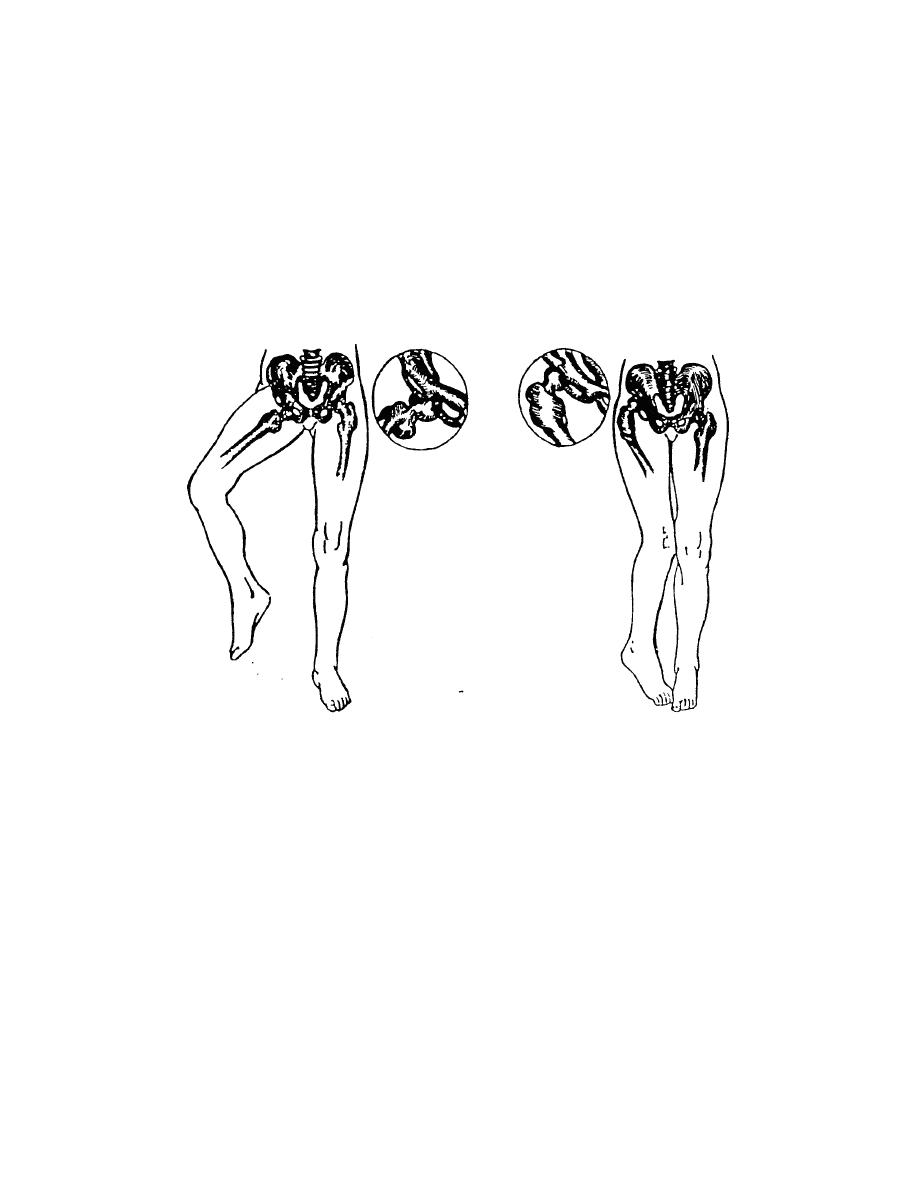
a. Signs and Symptoms. A dislocation results in a deformed appearance due
to the bone being out of its normal position (see figure 6-17). A dislocation also causes
pain and/or a feeling of pressure over the joint. The region around the joint usually
swells and is tender. The casualty may not be able to move the joint (the joint is
"locked"). If the end of the dislocated bone is pressing on a nerve or blood vessel, the
casualty may experience numbness or paralysis distal to (below) the injury.
CAUTION:
Do not ask the casualty to move the injured body part in order to test for
a locked joint or pain.
Figure 6-17. Casualty with a dislocated hip.(anterior dislocation on left, posterior
dislocation on right)
b. Treatment. Treat a dislocation as though it were a closed fracture.
(1) Check for pulse and sensation distal to the injury. If there is no pulse or
if the casualty has no feeling distal to the injury, get medical help at once. A medic may
be able to restore blood circulation by gentle manipulation of the limb.
(2) Immobilize (splint) the joint in the position in which it was found. Do not
attempt to straighten the affected limb or put the bones back in alignment. Splint a
dislocation using the same procedures as for a closed fracture. If the shoulder is
dislocated, use a sling to support the forearm.
IS0877
6-20



 Previous Page
Previous Page
